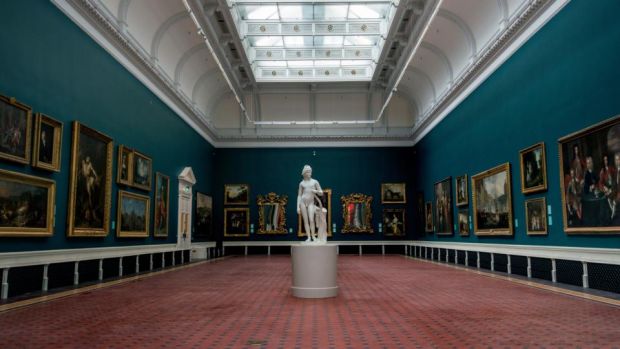Six years ago, the majority of the National Gallery of Ireland closed for a €30 million transformation. Director and producer Adrian McCarthy, together with Wildfire Films, observed the long and arduous process of completely renovating the historic Dargan and Milltown wings for over three years, producing an astonishing documentary film. Last Sunday, the National Gallery of Ireland played host to McCarthy to introduce and talk about his new documentary, ‘A Portrait of a Gallery’.
In his introduction, the director clarified that the documentary is not exactly about architectural history, but rather “about the place and the people who worked on it”. Essentially, he focused on two parallel worlds while filming: the construction works and the museum itself.
To gain a better understanding of the works, they conducted interviews with the project architects, the site manager, the museum director, as well as staff members such as conservators, curators, the Head of Collections and cleaners. To paint a more complete picture of the whole refurbishment process, McCarthy decided to include a few interviews with visitors, even if they expressed uncertainty and confusion about the museum revamp.
Considerable focus was given to the technical hitches and unexpected drawbacks during construction work. An example of this is when a well is discovered during excavation work, which results in the architects discussing how to deal with it, creating a delay in the completion of the project. McCarthy admits: “They never told me when something went wrong. I had to be sneaky.”
Luckily for viewers, some of the challenges faced by the architects, construction team and museum staff add a degree of dynamism to the film and provide an intriguing insight into the day-to-day project implementation. “Nothing ever goes smoothly”, says McCarthy. However, there were certain times when the situation became so critical that a crisis ensued, and the filmmakers were not welcome to film. The director confessed: “During a crisis they didn’t want you to film.”
When asked whether the people involved in the renovation were comfortable being in front of a camera, McCarthy replied: “They tended to be themselves, [they] were used to us”, claiming that he was “just like a fly”. The director and his staff had been working together with the museum since they started filming, creating a positive work environment for the entire team. In fact, McCarthy was impressed by how much the staff are invested in the gallery and said he tried to “capture the people”. A desperate site manager speaking to his team, a conservator happy to explain a meticulous procedure and a group of curators on a guided tour of the construction site are just a few examples of the variety of experiences and feelings observed and recorded in the documentary.
The official reopening of the National Gallery of Ireland last summer marked the end of a lengthy filming process. And what is next for McCarthy? Last Sunday, a final question regarding the director’s future career prospects came as a surprise: “Are they going to hire you from now on?” McCarthy hesitatingly answered: “I hope so. We’ll see.”






